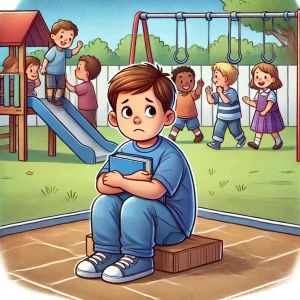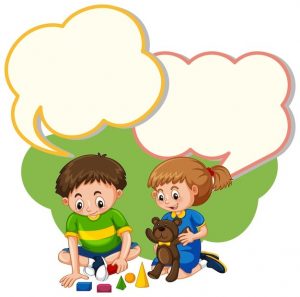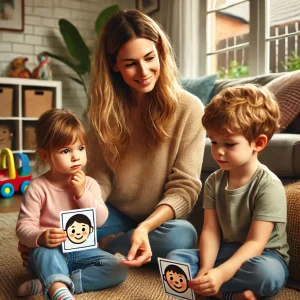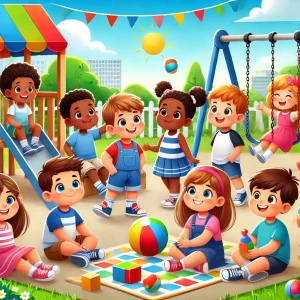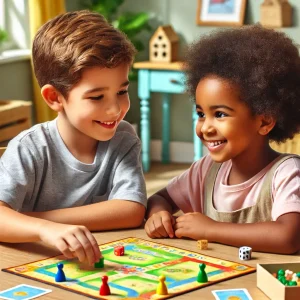Simple Social Stories for Kids with Autism and ADHD
Last Updated: January 10, 2025
Navigating daily life can be especially challenging for children with Autism or ADHD. Social stories for autism are an effective tool, helping them understand social norms and routines. These stories translate abstract concepts into concrete, relatable scenarios, making everyday situations more manageable. At Wellness Hub, we provide resources and support to empower these children and their caregivers, making each day a little easier and more successful. Join us to discover how our tailored social stories for autism can transform daily challenges into opportunities for growth.
Parenting kids with special needs is tough—our Social Stories make it simpler. Download now and give your child the tools to thrive!
Start HereWhat are Social Stories?
Understanding Social Stories in Behavioral Therapy
Social stories are short guides that help children with Autism and ADHD understand what to expect in social situations and how to behave. They break down social events into easy steps so these children can see what’s expected of them in various settings, like school or the playground.
Read More: How to Use Social Stories to Teach Kids with Autism
Why Social Stories Are Helpful
Social stories are great for several reasons:
- Clear Instructions: They show clear examples of good behavior.
- Reduce Anxiety: Knowing what to expect helps children feel less nervous.
- Better Social Skills: They teach children how to interact with others, which helps them make friends and get along better.
Benefits of Using Social Stories for Kids with Autism and ADHD
Social stories are particularly beneficial because they can be customized to address the unique needs of each child. For children with autism, these stories help bridge the gap between their understanding and what’s expected in various social contexts. For kids with ADHD, social stories aid in focusing their attention on key behaviors and social cues, reducing impulsivity and promoting better social interactions.
Key benefits include:
- Enhanced Understanding: Social stories explain the why, what, and how of social interactions, making them easier to understand and follow.
- Increased Predictability: By outlining what to expect and how to act, these stories help reduce anxiety about social situations.
- Improved Social Skills: Regular use of social stories can improve a child’s ability to engage appropriately with others, fostering better relationships.
- Behavioral Support: These stories are also great tools for teaching coping strategies and acceptable behaviors, which are crucial for children facing daily social challenges.
Benefits of Social Stories
| Benefit | Description |
|---|---|
| Enhances Understanding | Breaks complex social cues into understandable parts |
| Reduces Anxiety | Provides predictable scripts for unpredictable situations |
| Improves Social Skills | Teaches specific social behaviors in a structured way |
| Supports Emotional Regulation | Helps manage emotions through examples of coping strategies |
Crafting Effective Social Stories
Key Elements of a Successful Social Story
Creating social stories that resonate and effectively teach children with Autism and ADHD involves a few crucial elements:
- Specificity: Each story should be specific to the situation it addresses, providing clear details about what to expect and what is expected of the child.
- Perspective: Write from the child’s perspective to help them relate. Use phrases like “I can try…” or “I will learn to…”
- Positive Language: Focus on positive behaviors and outcomes. Instead of saying “I should not yell,” use “I will use a calm voice.”
- Visual Supports: Incorporate pictures or symbols to illustrate points and make the story more engaging and understandable.
- Simple Language: Use straightforward, concise sentences that the child can easily comprehend.
Tips for Tailoring Social Stories to Individual Needs
To make social stories work best for each child, customization is key. Here are some tips to tailor social stories to fit individual preferences and developmental levels:
- Know the Child: Understand their interests, strengths, and areas where they need support. A story that connects with their interests will be more engaging.
- Involve the Child: If possible, let the child help create the story. This can make the story more relevant and boost their interest in following it.
- Iterate: Social stories are not one-size-fits-all. They may need adjustments based on the child’s feedback or changes in their behavior.
- Length and Complexity: Adjust the length and detail of the story according to the child’s attention span and comprehension level. Younger or more distracted children may benefit from shorter stories.
- Consistent Review: Regularly revisit and revise the stories as the child grows or as their needs change. This keeps the stories effective and relevant.
Common Daily Challenges Addressed by Social Stories
Navigating daily life can be full of hurdles for children with Autism and ADHD. Social stories can be incredibly helpful in guiding them through common challenges they face every day. Here’s how these simple narratives make a big difference:
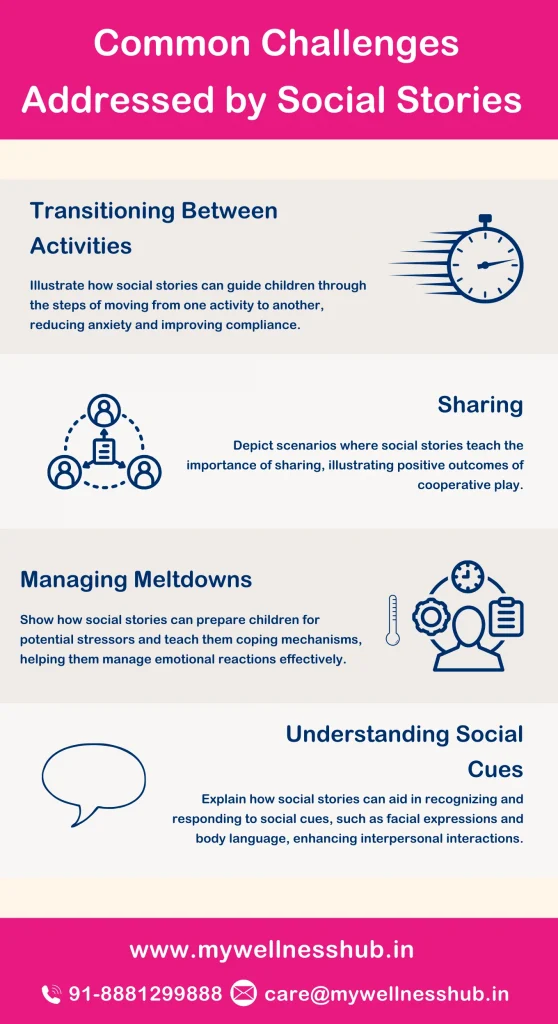
1. Transitioning Between Activities
For many children, moving from one activity to another can be jarring. Social stories that outline step-by-step what to expect during transitions can reduce anxiety and increase compliance. For instance, a story might detail the steps of cleaning up after playtime and moving to mealtime, showing the child that transitions are manageable and routine.
2. Sharing and Taking Turns
Sharing and taking turns are foundational social skills that children with Autism and ADHD might find complex. A social story can demonstrate the value of sharing and provide explicit examples of how and when to take turns. These stories help children understand the benefits of cooperative play and empathy, reinforcing positive social interactions.
3. Managing Meltdowns and High Emotions
Meltdowns or intense emotional reactions are common in children who might feel overwhelmed by their environment or changes in routine. Social stories can prepare them for potential stressors and teach coping mechanisms. By illustrating calming techniques like deep breathing or counting to ten, these stories equip children with tools to manage their emotions effectively.
4. Understanding Social Cues
Grasping the subtleties of social cues is a crucial skill that can be mystifying for children with developmental differences. Social stories can clarify what certain facial expressions and body languages mean and how to respond appropriately. This can include recognizing when someone is happy and wants to play, or understanding when it’s time to be quiet because someone is upset.
Example Social Stories for Everyday Situations
Helping children with Autism and ADHD navigate their daily routines can sometimes require creative solutions. Social stories are one of these creative tools, providing clear examples for handling everyday situations with greater ease. Here are three social stories tailored to common parts of a child’s day:
1. Social Story for Morning Routines
Morning routines can set the tone for the entire day. A social story about morning activities helps a child understand what to expect and what is expected of them. For example:
“When I wake up, I stretch my arms and legs to feel ready for the day. Then, I go to the bathroom, brush my teeth with my blue toothbrush, and wash my face to feel fresh. After that, I put on my favorite red shirt and blue pants because I dress myself for school. I eat my breakfast, which is usually a bowl of cereal and a banana. Each step helps me prepare for a great day at school!”
This story helps the child visualize and mentally prepare for each step of their morning, reducing anxiety about the unknown.
2. Social Story for School Settings
School environments are full of social interactions and transitions. A social story for school might go like this:
“In school, I sit at my desk with my name tag. I listen when my teacher, Ms. Johnson, talks. It’s important to raise my hand if I want to speak. When it’s time for lunch, I line up quietly with my friends. I eat my lunch, talk softly with my friends, and clean up my area when I’m done. School is fun because I learn new things and see my friends.”
This story emphasizes respectful interactions and understanding school rules, helping the child feel more comfortable and included in the school community.
3. Social Story for Playtime Interactions
Playtime is crucial for social development but can be challenging. A social story for playtime can guide appropriate play behaviors:
“When I play with my friends, I share my toys. We use our words to say what games we want to play. If I want a turn on the swing, I say, ‘Can I have a turn next, please?’ When I’m done, I give others a turn too. Playing together is more fun when everyone is happy and shares.”
This story encourages sharing and communication, foundational skills for interacting with peers during playtime.
Measuring the Impact of Social Stories
Understanding the effectiveness of social stories in helping children with Autism and ADHD navigate daily challenges is crucial. By measuring their impact, parents and educators can fine-tune strategies and ensure that these tools are meeting the needs of their children. Here’s how you can track the progress and gather valuable feedback.
Tools and Tips for Tracking Progress
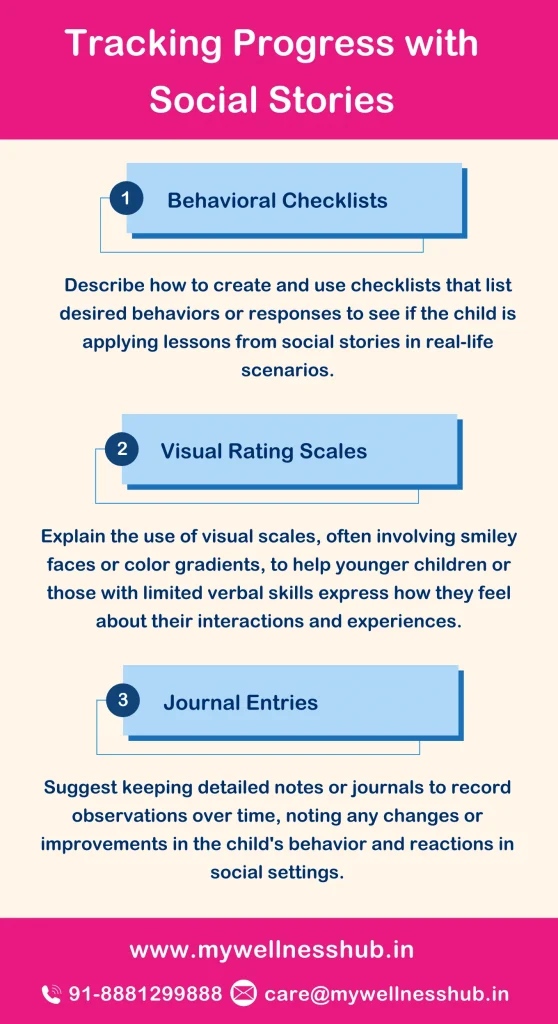
To effectively measure how social stories are helping your child, consider the following approaches:
- Behavioral Checklists: Create a checklist of behaviors and skills that the social story aims to improve. Monitor changes over time by regularly noting down observations. This can help you see if the child is applying what they’ve learned from the story in real-life situations.
- Visual Rating Scales: For younger children or those who might struggle with expressive language, use visual scales with smiley faces to rate how they feel about different interactions or transitions that the social story covers. This can be a simple way to gather insights into their comfort and anxiety levels in various situations.
- Journal Entries: Keep a daily or weekly journal of your observations. Note any changes in how the child responds to situations that were once challenging. This record can be a valuable tool for understanding long-term trends and immediate reactions.
- Feedback Sessions: Regularly schedule short sessions where you can talk with the child about the social stories. Ask open-ended questions to understand their perspective and gather feedback on which parts of the story they find most helpful or engaging.
Feedback from Parents and Educators
Feedback from those who use social stories daily is invaluable. Here are some ways to collect and use this feedback effectively:
- Surveys: Send out periodic surveys to parents and educators to collect systematic feedback on the social stories’ effectiveness and areas for improvement.
- Focus Groups: Occasionally, organizing focus groups with educators and therapists can provide deep insights into the practical applications and successes of social stories in different settings.
- Testimonials: Encourage sharing of anecdotes and testimonials from parents and educators about specific instances where social stories have made a difference. This qualitative data can be incredibly motivating and informative.
- Review Meetings: Hold review meetings with your team at Wellness Hub or with the child’s support group to discuss the feedback and decide on any adaptations to the social stories.
Conclusion
Social stories are powerful tools that help children with Autism and ADHD navigate daily life. They simplify social cues, improve behavior, and reduce anxiety, making everyday challenges more manageable. At Wellness Hub, we provide easy-to-use resources to help you create and implement these stories effectively. Ready to see positive changes? Visit Wellness Hub for guides, tips, and more. Start using social stories to help your child thrive in social situations. Let’s make every day a little easier and a lot more joyful for these amazing kids!
Frequently Asked Questions:
1. What are social stories?
Social stories are tailored, short descriptions created to help children with Autism and ADHD understand and navigate social interactions and behaviors. They provide clear examples of what to expect in various social settings and explain the appropriate responses in a step-by-step format that’s easy for children to follow.
2. How can social stories help my child with autism?
Social stories can significantly aid children with autism by breaking down complex social norms into understandable parts. They help clarify expectations in social interactions, reduce anxiety by explaining what will happen next, and improve behavioral responses by providing concrete examples of appropriate behavior.
3. What topics should I cover in social stories for ADHD?
For children with ADHD, focus on creating social stories that address situations requiring sustained attention and impulse control. Examples include managing classroom behavior, handling waiting turns during games or activities, and transitioning smoothly between tasks without disruption.
4. Can social stories improve my child’s ability to make friends?
Yes, social stories can enhance social skills that are critical for friendship, such as sharing, listening, and understanding others’ perspectives. By practicing these skills through repeated exposure to social stories, children can become more adept at interacting with peers in friendly and socially acceptable ways.
5. How often should I read social stories to my child?
Frequency can vary based on the child’s individual needs and the specific challenges they face. Generally, it’s beneficial to read relevant social stories multiple times, especially before encountering the situation they describe. This repetition helps reinforce the behaviors and expectations set out in the story.
6. Where can I find examples of social stories?
A great resource for finding examples of social stories is the Wellness Hub website, which offers a variety of customizable stories designed specifically for children with Autism and ADHD. You can access these resources by visiting our resources page, where you can download stories suited to your child’s needs.
7. What’s the best way to introduce social stories to a child with ADHD?
Begin by choosing stories that are engaging and directly relate to the child’s daily experiences. Keep the stories brief and focused, using visuals to help maintain attention. Introduce them during calm moments when your child is most receptive to new information.
8. Can social stories help with meltdowns?
Social stories can be very effective in preventing meltdowns by equipping children with strategies to recognize and manage their emotions. Stories that focus on identifying feelings and implementing calming techniques can empower children to handle emotional intensity constructively.
9. How long should a social story be for it to be effective?
Keep social stories concise—usually a few sentences to a short paragraph per scenario. This length keeps the child’s attention focused on the key messages without overwhelming them with too much information.
10. Are there specific times when I should use social stories?
Ideally, social stories should be read before specific events that are challenging for the child, such as visits to the dentist, school outings, or family gatherings. Regular reading as part of a routine can also help reinforce positive behaviors and assist the child in mastering social skills over time.
About the Author:
Shravanaveena Gajula
M.Sc ., Speech and Language Pathology (5+ years of experience)
Shravanaveena Gajula is a dedicated Audiologist and Speech-Language Pathologist with a BASLP and an M.Sc in Speech and Language Pathology. With experience spanning multiple settings, including Wellness Hub and Ashray Akruti, Veena specializes in a wide range of disorders from developmental issues in children to speech and language assessments in adults. Her expertise includes parent counseling, managing speech sound and fluency disorders, and creating individualized therapy programs. Veena is also PROMPT certified and an author of several insightful blogs on speech and language pathology, aiming to educate and assist caregivers in supporting their loved ones.
Book your Free Consultation Today
Parent/Caregiver Info:
Client’s Details:
* Error Message
